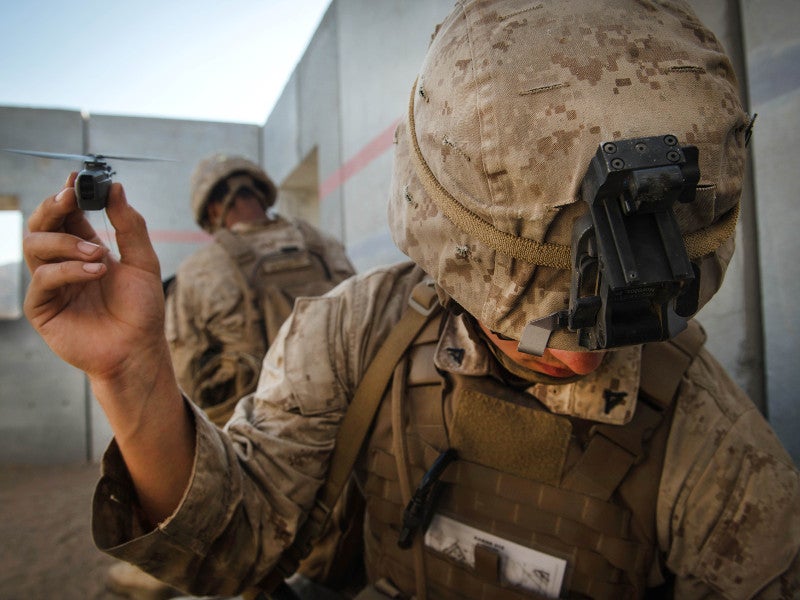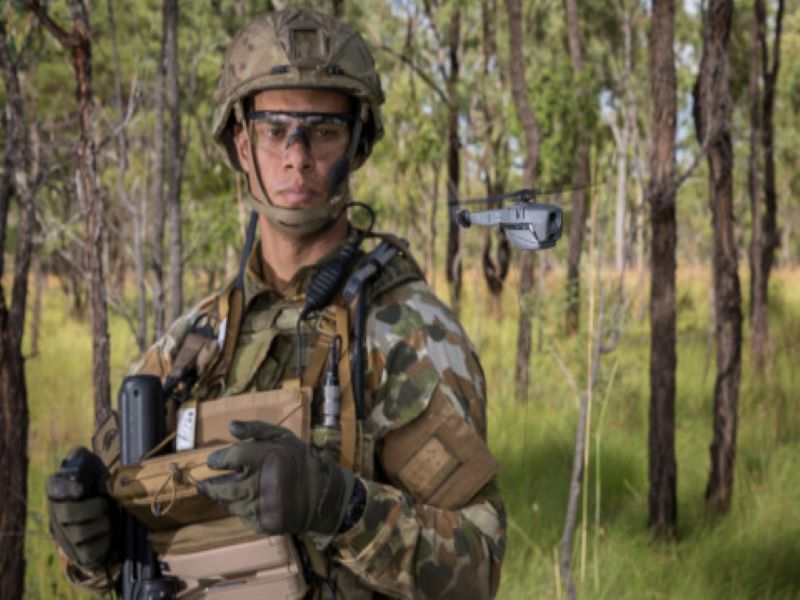The PD-100 Black Hornet is a tiny unmanned air vehicle (UAV) developed by Flir Systems. The Black Hornet UAV allows armed troops to spy potential threats. The small, remotely-controlled rotorcraft helps to save the lives of front line soldiers.
The Black Hornet offers intelligence, surveillance and reconnaissance support to armed forces in mission-critical operations. The UAV gives access to remote locations and provides situational awareness on the battlefield.
Black Hornet’s development was initiated by Prox Dynamics in April 2008. The drone went through several test flights and all kinds of tests before entering into serial production phase in early 2012.
The UK Ministry of Defence awarded a $31m contract to Prox Dynamics through Marlborough Communications for the delivery of 160 units of Black Hornets for its armed forces.
Black Hornet is deployed in Afghanistan to meet the surveillance requirements of the UK Armed Forces. The UAV is also in service with the security forces of several other countries.
Prox Dynamics delivered 100 Black Hornet nano UAVs by early 2013. The company was acquired by FLIR Systems in a $134m transaction in November 2016.
The PD-100 Black Hornet was chosen by the US Army Natick Soldier Research, Development and Engineering Center (NSRDEC) under the Cargo Pocket Intelligence, Surveillance, and Reconnaissance (CP-ISR) programme in July 2014. The drone underwent training with the US military forces at an event in the first quarter of 2015. Flir launched the next-generation Black Hornet 3 nano-UAV in June 2018. It received a $39.7m initial contract for the Black Hornet 3 in January 2019, which was followed by a $20.6m contract to deliver the Black Hornet 3 Personal Reconnaissance Systems (PRS).
Deliveries of the Black Hornet 3 PRS units are expected to begin by the end of 2020 to support the US Army’s platoon and small unit-level surveillance and reconnaissance capabilities.
PD-100 Black Hornet design
The Black Hornet is constructed of a rugged, plastic-moulded shell. The aerodynamic shape of the nano UAV withstands stormy winds. The tiny drone is fitted with three surveillance cameras concealed within its nose. The complete PD-100 Black Hornet system includes two UAVs and a base station.
The UAV has a length of about 100mm and rotor span of 120mm. It has a weight of 16gm, including that of the surveillance camera. The total system excluding display weighs less than 1kg.
Black Hornet features
Black Hornet is designed for easy transportation and the entire system fits into a soldier’s pocket. A soldier can carry the entire PD-100 Black Hornet unmanned air vehicle system along with his gear.
The ultra-compact dimensions of the Black Hornet enable the operator to use it in congested and threat-prone areas effectively. The system generates almost negligible noise, making the aircraft more stealthy and re-usable. The small UAV is readily available to fly and takes less than a minute for takeoff.
Black Hornet 3 has a weight of 32gm and provides improved features such as the ability to fly in environments with no GPS.
Sensors and navigation of Black Hornet nano UAV
Black Hornet is installed with a steerable electro-optic (EO) camera capable of producing still images as well as live videos that are displayed on a hand-held device. The camera can be zoomed for clearer picture using the base station controls.
The auto pilot system installed on board the Black Hornet enables the operator to handle the drone in two modes. The drone can either be operated directly or can be programmed to go through a predefined path using the GPS system installed inside. The digital data link allows the operator to control the UAV within the line-of-sight range of 1,000m.
Power unit of Black Hornet
The Black Hornet micro UAV is powered by a very small rechargeable battery. The battery is designed to rotate both horizontal and vertical rotors installed on the drone.
Ground control station
Black Hornet nano is controlled by an operator from the ground using a joystick-like device. The technology onboard the UAV enables the operator to control the drone from a maximum range of 1,000m.
The base station of the Black Hornet offers planning, execution and analysis services to the operator of the system. It includes display connections and system control connections.
Black Hornet performance
The Black Hornet can fly at a speed of 10m/s. It has a maximum endurance of 25 minutes.




